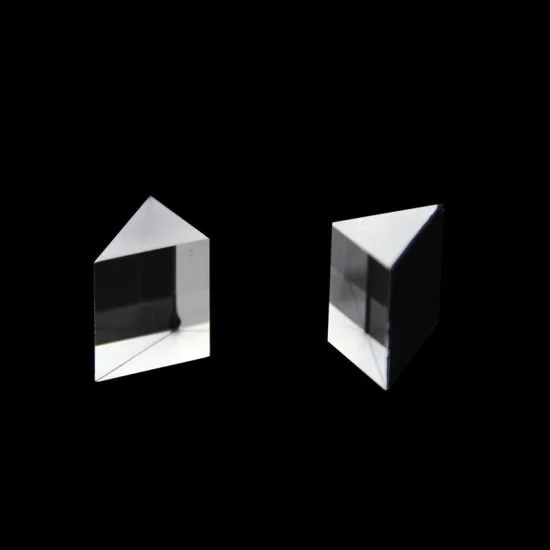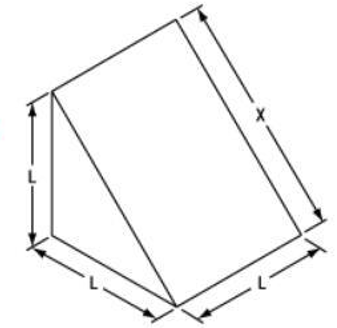Optical Prisms
Optical prisms are transparent objects made of glass or plastic that are used to refract, reflect, or disperse light. They are typically triangular in shape and have two flat surfaces called faces that are parallel to each other, and a third face that is angled relative to the other two faces.
When light passes through a prism, it is refracted or bent, causing it to separate into its component colors. This effect is called dispersion and is the basis for how prisms are used in devices such as spectrometers and cameras.
Prisms can also be used to reflect light, such as in binoculars or periscopes. In these devices, the prism is coated with a reflective material such as aluminum or silver, which allows light to be redirected without passing through the prism.
Optical prisms come in a variety of shapes and sizes and can be used for many different applications, including scientific research, photography, and laser technology.
Right Angle Prisms
Right Angle Prisms
A right-angle prism is a type of optical prism that has a right-angle triangular shape, with one 90-degree angle and two acute angles that are typically 45 degrees each. It is also known as a 90-degree prism or a corner cube prism.
Firebird Optics provides Right Angle Prisms in a variety of materials including N-BK7, Fused Silica, CaF2 and ZnSe.
Basics of Right Angle Prisms
A right angle prism is a type of optical prism with a rectangular cross-section and two perpendicular faces that meet at a 90-degree angle. These prisms are often made of glass, fused silica or other IR transparent materials.
One of the most common uses of a right angle prism is to reflect and redirect light. When light enters the prism at one of its faces, it is refracted or bent as it passes through the prism and then reflected off the perpendicular face. The angle of reflection is equal to the angle of incidence, and the result is a beam of light that is redirected at a 90-degree angle from its original direction.
Right angle prisms can be used in a variety of optical systems, including cameras, binoculars, and telescopes. They are often used to invert or revert an image, to rotate or displace a beam of light, or to combine two beams of light at a 90-degree angle. Right angle prisms are also used in scientific research, such as in spectroscopy and laser experiments.








